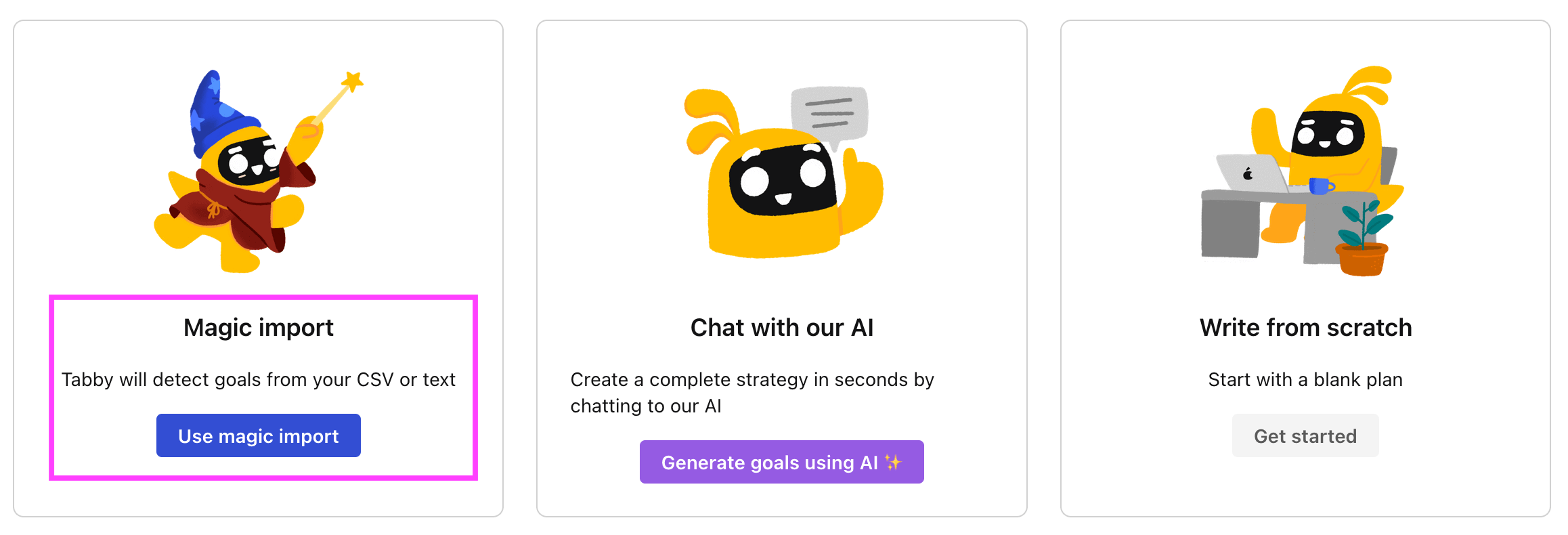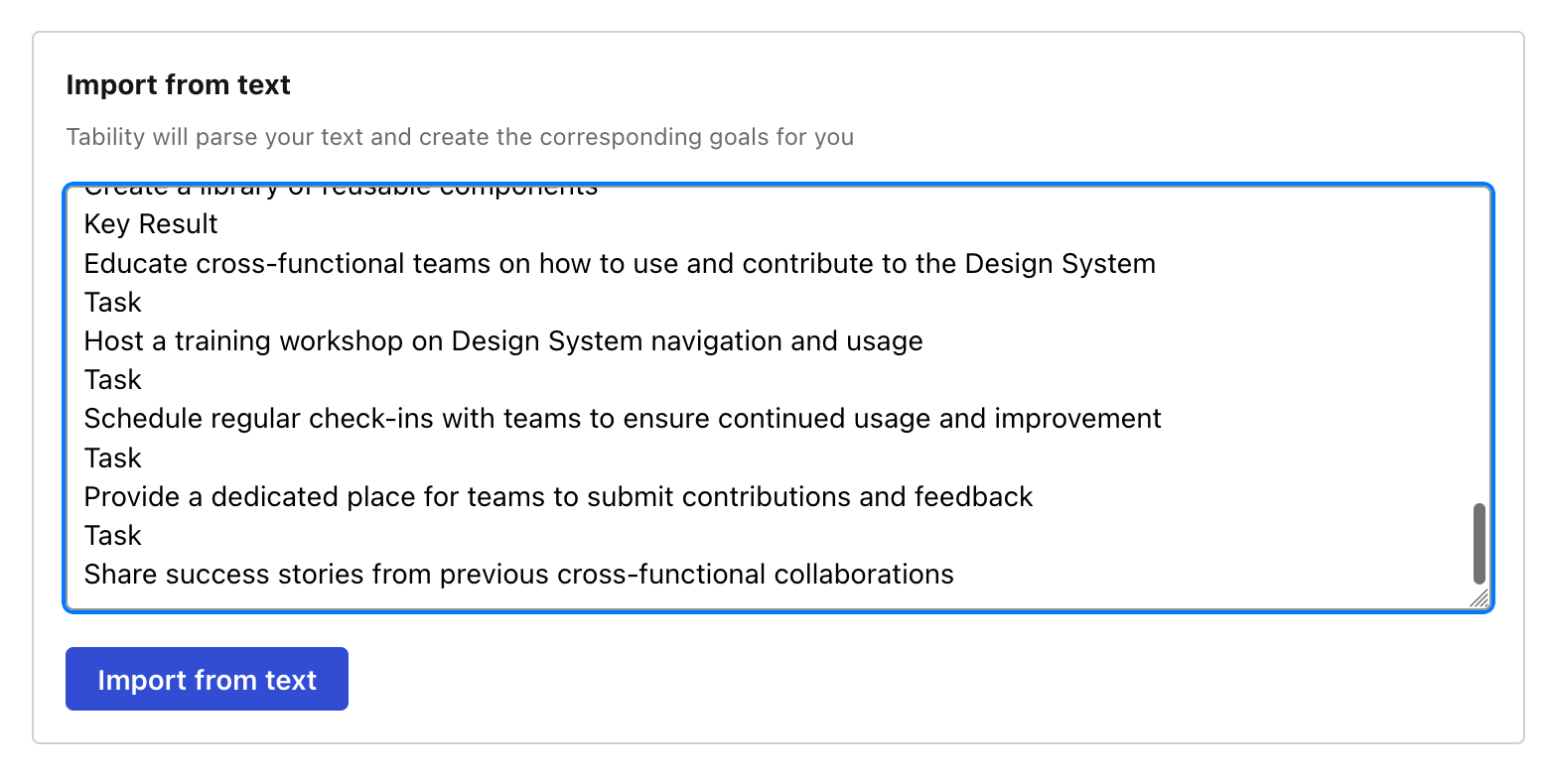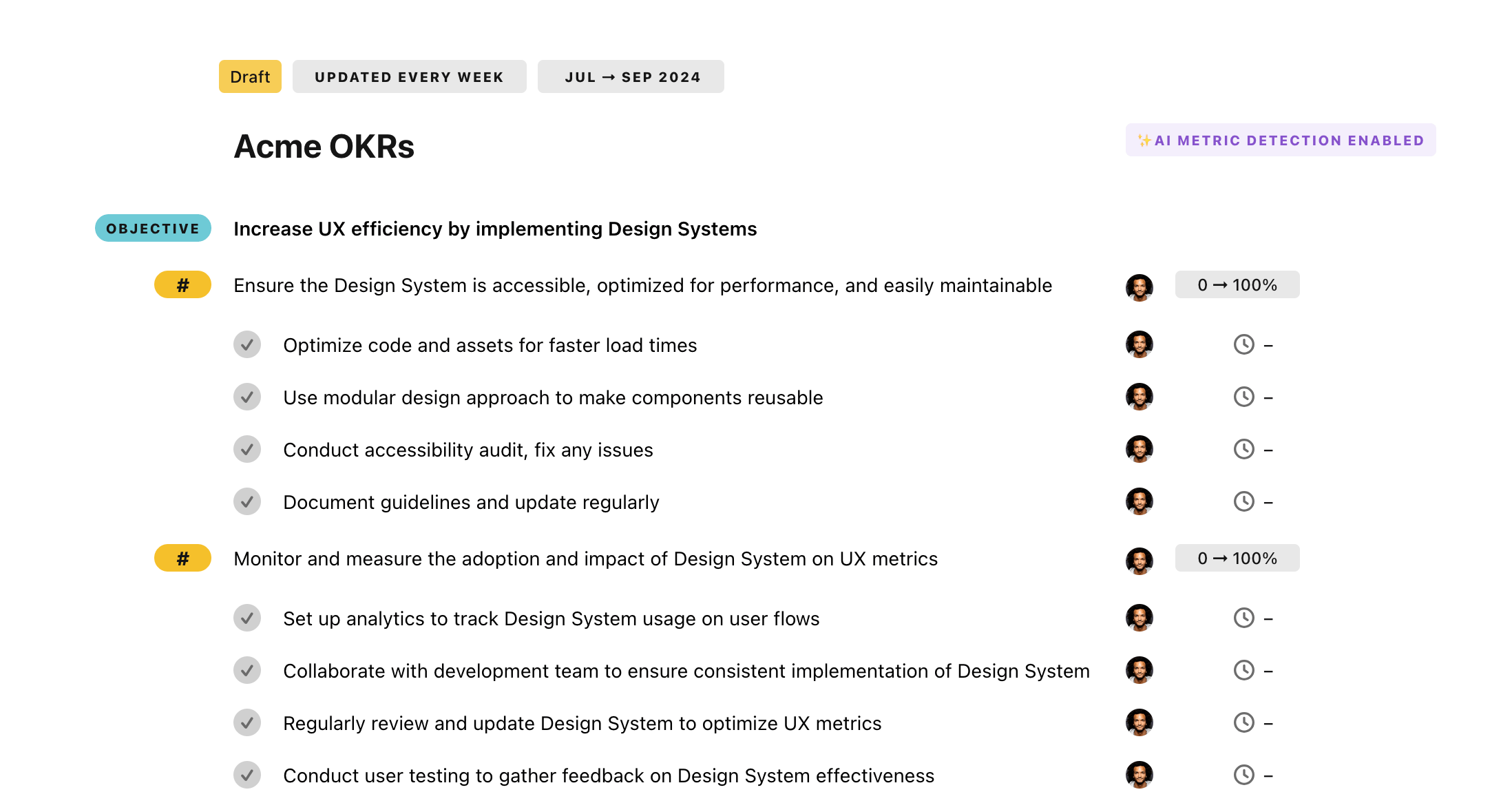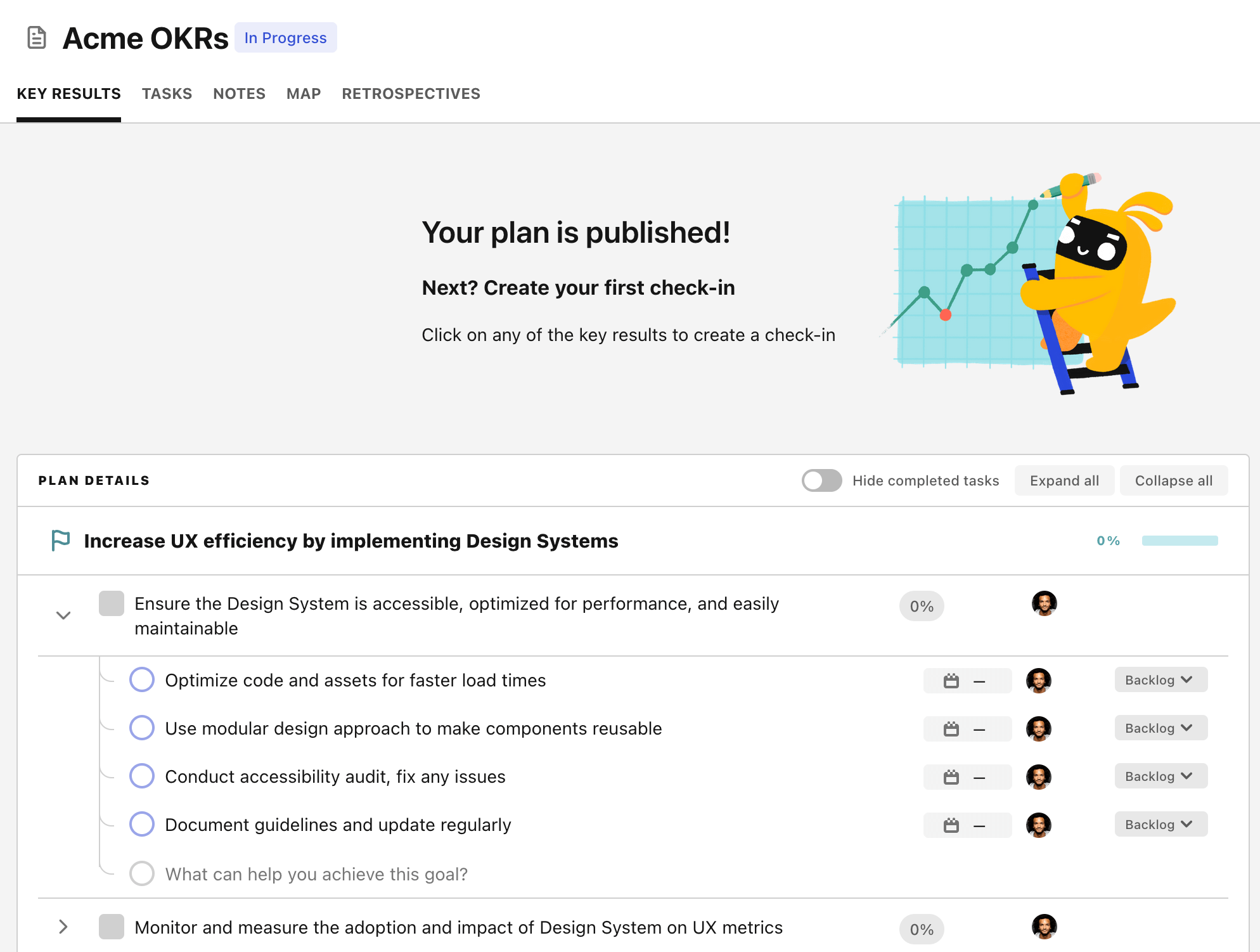OKR template to improve customer support quality
Your OKR template
The objective to reduce average response time to customer inquiries by 20% is backed by initiatives such as updating inquiry response templates, streamlining communication processes and implementing a chatbot. Training customer service agents to improve their efficiency also forms part of the strategy to minimize response times.
The second objective targets raising the customer satisfaction rate to 4.8 out of 5. To achieve this, the plan suggests implementing targeted initiatives, conducting surveys, analyzing survey results, and monitoring customer satisfaction metrics. These steps are designed to gather feedback, identify areas for improvement, and continuously adjust plans based on these findings.
The final objective focuses on enhancing the support staff's product knowledge through a comprehensive training program. Similarly, the aim to increase the first-call resolution rate to 90% also involves training agents in addition to improving communication channels, analyzing customer feedback and strengthening documentation resources.
ObjectiveImprove customer support quality
KRReduce average response time to customer inquiries by 20%
Regularly review and update customer inquiry response templates to ensure accuracy and effectiveness
Streamline the customer inquiry process by optimizing communication channels and eliminating unnecessary steps
Implement a user-friendly chatbot to answer common customer inquiries instantly
Train customer service agents to improve their efficiency and speed in responding to inquiries
KRIncrease average customer satisfaction rating to 4.8 out of 5
Implement targeted initiatives to address the identified areas of improvement
Conduct a comprehensive survey to gather feedback from customers
Analyze the survey results to identify areas of improvement and prioritize action
Regularly monitor customer satisfaction metrics and adjust initiatives accordingly
KRImplement a comprehensive training program for support staff to enhance product knowledge
KRIncrease the first-call resolution rate to 90%
Enhance communication channels for timely collaboration and knowledge sharing among agents
Analyze customer feedback data to identify commonly recurring issues for targeted resolution strategies
Improve documentation resources to provide agents with accurate and concise troubleshooting information
Implement comprehensive agent training program for enhanced issue resolution skills
How to edit and track OKRs with Tability
You'll probably want to edit the examples in this post, and Tability is the perfect tool for it.
Tability is an AI-powered platform that helps teams set better goals, monitor execution, and get help to achieve their objectives faster.
With Tability you can:
- Use AI to draft a complete set of OKRs in seconds
- Connect your OKRs and team goals to your project
- Automate reporting with integrations and built-in dashboard
Instead of having to copy the content of the OKR examples in a doc or spreadsheet, you can use Tability’s magic importer to start using any of the examples in this page.
The import process can be done in seconds, allowing you to edit OKRs directly in a platform that knows how to manage and track goals.
Step 1. Sign up for a free Tability account
Go tohttps://tability.app/signup and create your account (it's free!)
Step 2. Create a plan
Follow the steps after your onboarding to create your first plan, you should get to a page that looks like the picture below.

Step 3. Use the magic importer
Click on Use magic import to open up the Magic Import modal.
Now, go back to the OKR examples, and click on Copy on the example that you’d like to use.

Paste the content in the text import section. Don’t worry about the formatting, Tability’s AI will be able to parse it!

Now, just click on Import from text and let the magic happen.

Once your example is in the plan editor, you will be able to:
- Edit the objectives, key results, and tasks
- Click on the target 0 → 100% to set better target
- Use the tips and the AI to refine your goals
Step 4. Publish your plan
Once you’re done editing, you can publish your plan to switch to the goal-tracking mode.

From there you will have access to all the features that will help you and your team save hours with OKR reporting.
- 10+ built-in dashboards to visualise progress on your goals
- Weekly reminders, data connectors, and smart notifications
- 9 views to map OKRs to strategic projects
- Strategy map to align teams at scale